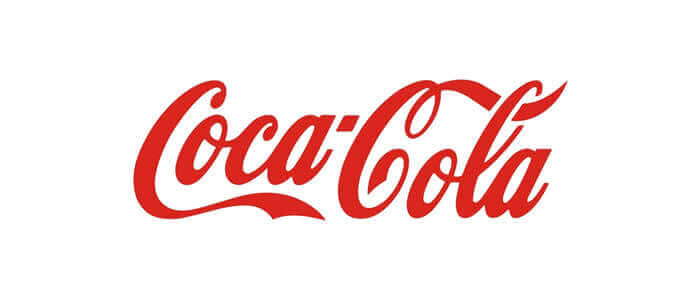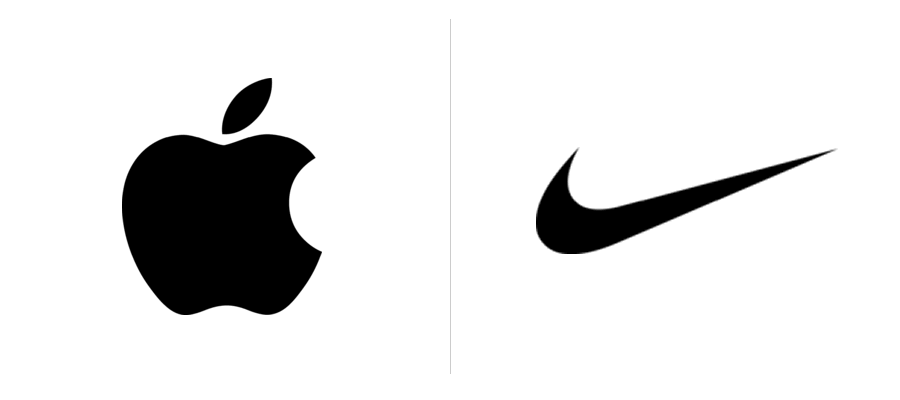In this article we discuss How Logos Influence Consumer Behavior: The Psychology of Brand Recognition.
Ever wonder why certain logos stick in our minds and seem to pop up in our daily lives, even when we’re not looking for them? Studies show that 93% of consumers recognise and are more likely to buy from brands they can identify with visually.
Logos are more than just a design on a product—they’re symbols that forge emotional connections, build trust, and influence our choices in subtle but powerful ways. Let’s dive into how logos shape consumer behaviour and why brand recognition isn’t just about looking good—it’s about feeling right.
Table of Contents
The Power of Logos in Brand Recognition
A logo is like a brand’s signature. Think of Apple’s apple, Nike’s swoosh, or Coca-Cola’s iconic red and white script. These aren’t just logos; they’re powerful visual triggers that immediately bring to mind a company’s values, identity, and even our past experiences with them.
When a logo achieves high brand recognition, it essentially becomes shorthand for the entire brand, making it effortless for consumers to identify and trust the product.
Why Does Brand Recognition Matter?
Brand recognition isn’t just about familiarity; it’s about building a connection with the consumer. A well-recognised logo sends a subconscious message to consumers: “You know us, and you trust us.”
Studies show that people are more likely to purchase from brands they feel familiar with, even if they don’t know much about the product itself. This phenomenon, known as the mere exposure effect, explains why we gravitate towards logos we recognise and feel comfortable with.
How Logos Affect Consumer Perception and Behavior
Logos influence how we perceive brands on a deeper, almost subconscious level. The colours, shapes, and fonts chosen in a logo design can create specific emotional responses that sway consumer behavior. Let’s break down some of the psychological elements that play into this.
Color Psychology in Logos
Color is one of the most immediate ways logos affect our perception. Research shows that 90% of snap judgments about products can be based on color alone! Each colour evokes different emotions and associations:
- Red: Often associated with energy, excitement, and urgency. Think of brands like Coca-Cola and Netflix, which use red to capture attention and spark energy.
- Blue: Known for trustworthiness, calmness, and reliability. Major financial institutions like Chase and healthcare brands use blue to convey trust.
- Green: Linked with growth, peace, and health. Brands like Starbucks and Whole Foods use green to promote a feeling of freshness and eco-friendliness.
The choice of colour in a logo isn’t arbitrary; it’s carefully selected to align with the brand’s core message and the emotions they want to evoke in consumers.
Related article:
- Colours that Define Your Brand: Unlocking the Power of Colour Psychology in Logo Design
- Colour Psychology in Famous Brand Logos
Shape and Symbolism in Logo Design
Shapes are another subtle yet powerful factor. Circular logos, like those used by MasterCard or Pepsi, tend to feel friendly and inclusive, while angular logos, like Adobe or FedEx, can create a sense of strength and professionalism. The shape of a logo plays into symbolism and can convey messages without a single word.
For instance, if a logo has soft, rounded edges, it may come across as more approachable and informal. On the other hand, sharp edges can convey innovation, precision, or authority. Just think about the FedEx logo’s arrow, which subtly represents forward motion and efficiency—qualities you’d want in a logistics company.
Related Articles:
The Psychology of Trust and Loyalty Through Logos
People often form attachments to brands in the same way they form attachments to people. Once a brand establishes trust, its logo becomes a beacon of reliability. A recognisable logo assures consumers that they are buying from a trusted source, reinforcing the connection each time they see it.
Building Brand Loyalty
Brand loyalty goes beyond mere recognition. Consumers who feel a strong connection with a brand’s logo often display higher brand loyalty, sticking with it over competitors even when there are other options. Why? Emotional attachment. Once a consumer feels emotionally invested in a brand, the logo becomes a symbol of that relationship.
For example, think about the nostalgia connected to brands like McDonald’s or Disney. Their logos don’t just represent products; they evoke childhood memories, family outings, or other positive experiences. This emotional branding helps deepen loyalty over time.
Emotional Responses to Familiar Logos
Logos can evoke immediate emotional reactions in consumers, especially when the brand has played a role in a memorable part of their lives. When we see a familiar logo, the brain releases dopamine, which triggers positive feelings. This phenomenon explains why loyal Apple users line up for every new iPhone release or why Starbucks fans will seek out that green siren logo no matter where they are.
The Role of Consistency in Building Trust

Consistency is key to effective branding. When a logo remains stable over the years, it reinforces trust and reliability. On the flip side, frequent logo redesigns can disrupt brand loyalty and confuse customers.
Brands like Coca-Cola have maintained the essence of their logo design over decades, and this consistency reassures consumers that they’re still the same, trusted company.


However, not all redesigns harm brand recognition. Subtle tweaks—like FedEx’s hidden arrow or Amazon’s smile—can add layers of meaning that strengthen brand perception and enhance the consumer experience.
The Science Behind Logo Familiarity and Consumer Choice
It’s not just emotions at play; science backs up the impact of logos on consumer choice. The mere exposure effect, a psychological principle, suggests that the more we’re exposed to something, the more we tend to like it.
This explains why advertising campaigns repeatedly show logos—they’re trying to make the logo familiar and thus more likable.
Familiarity Breeds Preference
Have you ever noticed how seeing a familiar logo makes you feel more comfortable, even if you’ve never tried the product? That’s the power of familiarity.
When consumers repeatedly encounter a logo, it becomes ingrained in their minds. Over time, this familiarity breeds preference, nudging consumers toward that brand when it’s time to make a purchase decision.
Case Studies: Brands That Mastered Consumer Influence Through Logos

Some logos have become so powerful that they’re almost cultural icons, influencing consumer behavior across the globe. Let’s look at a couple of examples:
- Nike: The iconic swoosh isn’t just a logo; it’s a symbol of movement, inspiration, and performance. Consumers see the swoosh and instantly feel motivated, associating it with athletic prowess and achievement.
- Apple: Apple’s logo is simplicity perfected, symbolizing sophistication and innovation. It’s minimalistic but memorable, giving consumers a sense of belonging to an exclusive, high-quality community.
These brands have leveraged logo psychology to reinforce their brand messages, build loyalty, and influence purchasing decisions.
Practical Tips for Businesses to Design Impactful Logos
For brands looking to create or refine their logos, the following tips can help ensure your logo builds positive consumer behavior and recognition:
- Align with Your Brand Personality: Choose colors, shapes, and fonts that reflect the essence of your brand. Are you aiming for a sophisticated or playful vibe?
- Focus on Simplicity: A cluttered logo can confuse consumers. Aim for a clean, recognizable design that stands out without overwhelming.
- Consistency is Key: Once you find a logo that works, stick with it. Consistency builds trust and familiarity.
- Subtle Symbolism: Consider adding small but meaningful details to your logo that convey your brand values (like Amazon’s smile or FedEx’s arrow).
- Invest in Testing: Use surveys or focus groups to gather feedback on your logo’s appeal and emotional impact. Test different designs to see what resonates most with your audience.
Related article:
- 14 Design Principles of Good Logo Design
- Logo Design Hierarchy Principles: A Complete Guide to Visual Organisation
- Visual Identity Elements: The 7 Core Components Every Brand Needs
Conclusion
Logos play a crucial role in how consumers perceive brands and make purchase decisions. Through color psychology, symbolism, and the power of familiarity, logos can evoke emotions, build trust, and foster loyalty.
So next time you see a logo you recognise, remember—it’s more than just a design. It’s a powerful piece of branding psychology at work, subtly guiding your perceptions and influencing your choices.
Join The Logo Community
We hope this article about Brand Awareness Examples: 7 Companies That Dominated Their Market has been helpful. If you would like more personal tips, advice, insights, and access to our community threads and other goodies, join us in our community.
You can comment directly on posts, access our community threads, have a discussion and ask questions with our founder Andrew.
Tired of clients questioning your logo design prices? Our new eBook gives you the exact scripts, objection handlers, and confidence to communicate your value. No more awkward pricing conversations—just more high-paying projects.
Get it Now!


Author Bio
Andrew Marriott is the owner and founder of The Logo Creative™. He is an award-winning designer with over two decades of experience designing logos and specialising in branding for companies worldwide.
FAQ: How Logos Influence Consumer Behavior
How do logos impact consumer behavior?
Logos shape consumer behavior by building brand recognition and trust. Through colour, shape, and symbolism, logos evoke emotions that influence purchasing decisions.
Why is brand recognition important for businesses?
Brand recognition helps businesses stand out and build loyalty. A familiar logo increases the likelihood of customers choosing the brand over competitors.
What role does color play in logo psychology?
Colour in logos triggers specific emotions. For example, red creates urgency, while blue conveys trust. These colours influence how consumers perceive a brand.
How does logo familiarity affect buying decisions?
Logo familiarity breeds preference. When consumers repeatedly see a logo, they feel comfortable with the brand, making them more likely to purchase.
Can logos increase customer loyalty?
Yes, logos can foster loyalty by establishing an emotional connection with consumers. A strong, consistent logo becomes a symbol of reliability and trust.
Why do iconic brands keep their logos consistent?
Iconic brands maintain consistent logos to reinforce brand trust and recognition. Frequent redesigns can disrupt consumer loyalty and weaken brand identity.
What are examples of brands with impactful logos?
Examples include Apple, Nike, and Coca-Cola. These logos go beyond design; they symbolise values that connect deeply with consumers.


